14th Symposium - 2024

- April 3
- April 4
- April 5
- April 6
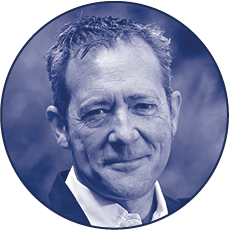
Chairman | Axel Cleeremans
Research Director with the F.R.S-FNRS (Belgium); Director of the Center for Research in Cognition & Neurosciences, Université Libre de Bruxelles; Member of the Royal Academy of Belgium. Scientific Interests: Consciousness; unconscious cognition; computational modelling of cognitive processes; agency; affective neuroscience.

Todd Lubart
Professor of Psychology, University Paris Cité, France. Serves on the editorial board of several journals concerning creativity and innovation, received the Berlyne award (American Psychological Association), the NAGC Torrance Award, and was a junior member of the Institut Universitaire de France. President of the International Society for the Study of Creativity and Innovation. Scientific interests: measures of creative potential; environmental support for creativity using virtual reality; development of creativity through game play and the use of generative AI for creativity.
Research on creativity over the past century has evolved to focus increasingly on the brain as the epicenter of original thinking. However, a broader perspective developed in this presentation suggests that creativity is not only happening inside a person's head. Creativity is a contextualized phenomenon that goes beyond an individual with a brain. Indeed, creativity may not require a brain at all. In this regard, insights offered by recent advances in artificial intelligence will be discussed to complete the brief introduction to creativity.

Caroline Watt
Holder of the Koestler Chair of Parapsychology, and founder member of the Koestler Parapsychology Unit, Psychology Department, University of Edinburgh, Scotland. Scientific interests: testing the psi hypothesis using the ganzfeld method; replication and methodological issues in parapsychology.
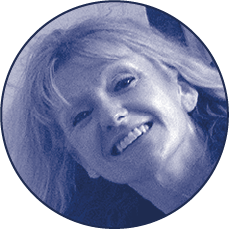
Nicola Clayton
Professor of Comparative Cognition, Department of Psychology, University of Cambridge, UK. Fellow of Clare College and Fellow of the Royal Society, Director of the Cambridge Centre for the Integration of Science, Technology and Culture. She has worked with Mark Baldwin for almost fifteen years. Scientific and artistic interests: thinking with and without words; choreography inspired by comparative cognition.

Mark Baldwin
Multi-award-winning choreographer, artistic director and visual artist. Academic Visitor, Department of Psychology, University of Cambridge, UK, where he works with Nicola Clayton. Scientific and artistic interests: thinking with and without words; choreography inspired by his background as a performer both as a dancer/choreographer and as Artistic Director of Britains National Dance Company Rambert 2002-18. Made an Officer of the British Empire in 2015 for his services to dance.
Mental time travel refers to the subjective experience of recalling the past and imagining the future. It is about projecting the self in time, reflecting on where we have been and where we are going in space and time. Memories are not fixed repositories of the past but move in flexible ways because they evolved with the future in mind. We will explore these concepts scientifically and artistically through our joint interest in choreography, the ways in which we explore the movement and musicality of wordless thoughts in humans and in other animals with whom we share the planet and its implications for creativity.

Christine Simmonds-Moore
Professor of Psychology, Psychology program, Department of Anthropology, Psychology and Sociology, University of West Georgia, USA. Director of the Exceptional Experiences Research Lab [EERL]. Scientific interests: exceptional experiences (ExE); paranormal beliefs and disbeliefs; individual difference correlates of ExE (including positive schizotypy, transliminality, synesthesia, ASMR, and interoception); mental health correlates of ExE; altered states of consciousness.
There is a collection of neural, perceptual, and cognitive attributes that contribute to both creativity and tendencies toward a range of exceptional experiences (ExE), including ostensible psi phenomena. These attributes reflect a plastic, connected (disinhibited) nervous system (mind and body) and cognitive style which translates to being psychologically and physically sensitive to a range of internal and external stimuli and sources of information. In addition, this type of system often tends toward syncretic tendencies that enable tangible representations of ideas, stimuli, and information that may not usually be consciously available. Intriguingly, there seems to be an interplay between individual differences, states of consciousness, and other factors in terms of creativity and exceptional experiences. Variables of interest include synesthesia, transliminality, Hartmann’s boundary thinness, positive schizotypy, interoception, and ASMR (Autonomous Sensory Meridian Response). In this paper and presentation, I will explore how systems in which one can dip in and out of connected states may result in more genuinely creative outputs and the availability of ostensible psi phenomena. These systems may relate to systems that are rich in fractal signatures and exhibit metacognitive traits and cognitive organization.

Amory Danek
Postdoctoral Researcher and Lecturer, Department of Psychology, Heidelberg University, Germany. Founder of Insight without Borders (discussion forum for insight researchers across the world). Scientific interests: human problem solving; creativity; meta-reasoning; false insights; memory and magic tricks.
Insightful ideas are a powerful expression of creativity. Hundred years after Wolfgang Köhler observed “insightful” behaviour of chimpanzees on the island of Tenerife, creative problem solving has become an exciting area of research, with links to metacognition, memory and emotion. New methodological approaches have revived the study of creativity and insight problem solving. Research addressing the peculiar phenomenology of insight (“Aha! experiences”) has seen the most interest recently, but the crucial question of how new ideas emerge still remains to be answered. This talk gives an overview on contemporary efforts to understand human problem solving and creativity. Topics to be discussed are the role of insight in creative problem solving, including affective and cognitive components, mental set and fixation, and the extent to which Aha! experiences predict correct solutions. Recent studies converge on the finding that the Aha! experience is best regarded as a multi-dimensional construct with three components: Joy of discovery, confidence in being correct and a feeling that the idea emerges all at once. But how can ideas suddenly appear in consciousness, seemingly without effort? What is contributed by unconscious processes? What is known about the underlying cognitive process of restructuring the problem representation? I will present an innovative task domain that I developed in order to make Aha! experiences tractable in the lab. In the magic trick paradigm, a series of magic tricks is presented as problem solving task, challenging observers to find out how the magician achieves the magic effect. If they succeed, strong Aha! experiences are triggered. On the cognitive level, generating non-obvious ideas requires breaking free from unwarranted assumptions and constraints. Therefore, I will also discuss research on escaping fixation and mental set. When prior knowledge and experience prime incorrect approaches, it is difficult to break down those self-imposed barriers. In some cases, however, cues or training can be helpful to overcome fixation. Another key topic is the accuracy effect of insight: When the solution to a problem comes to mind accompanied by an Aha! experience, it is more likely to be accurate compared to solutions where this feeling of epiphany is missing. The accuracy effect has been shown repeatedly, holds across task domains and remains stable when potential confounds are excluded. This finding supports the idea that feelings of Aha! signal correctness, emotionally marking some ideas as novel and surprising. Such an intuitive sense of success is clearly adaptive. Possible causes and consequences of the effect will be discussed.

Anna Abraham
Psychologist and neuroscientist, E. Paul Torrance Professor in the Mary Frances College of Education, University of Georgia, USA. Director of the Torrance Center for Creativity and Talent Development. Author of “The Neuroscience of Creativity” and Editor of “The Cambridge Handbook of the Imagination”. Scientific interests: interdisciplinary examination of fundamentally human capacities such as creative thinking and other core aspects of the imagination including the reality-fiction distinction, self and social cognition, mental time travel, mental state reasoning, and aesthetic experience.
Is the right hemisphere the seat of the creative brain? Do psychedelic drugs enhance creativity? Does mental illness accompany creativity? These are some of the many polemic questions about creativity that have long been of interest to researchers and the general public alike. In our attempt to understand how creative minds operate, we favor explanations that are eccentric. It is as though any explanation for creativity, this seemingly magical phenomenon, must itself bear some inherent peculiarities to be convincing. When these notions come to be widespread and held as fact by many, academics often present them as pure myths that need to be debunked. Nonetheless, despite all the pronouncements and evidence to the contrary, creativity "myths" tend to persist. The question is why? In this lecture, Professor Anna Abraham explores dominant notions that abound about the creative brain and how they come about. In doing so, she unravels their roots and their truths.

Moderator | Mário Simões
Retired Professor of Psychiatry and Consciousness Sciences, Faculty of Medicine of Lisbon, Portugal. Scientific interests: psychology and psychophysiology of altered states of consciousness; ethnomedicine; human exceptional experiences and psychology and spirituality.
2nd session

Rainer Goebel
Professor of Cognitive Neuroscience, Faculty of Psychology and Neuroscience, Maastricht University, The Netherlands. Founding director of the Maastricht Brain Imaging Centre (M-BIC). Scientific interests: neuronal representations in the brain and how they are processed to enable specific perceptual and cognitive functions; neural correlates of visual awareness; clinical applications in brain computer interfaces (BCIs) and neurofeedback studies.

Michael Hanchett Hanson
Director, Masters Concentration in Creativity and Cognition, Teachers College, Columbia University, USA. Member of the Chair, Homo Creativus, l'Université de Paris-Cité, France. Secretary, International Society for the Study of Creativity and Innovation (ISSCI); Editor, Creativity in Practice series, Routledge. Scientific interests: systemsbased analyses of creative development across lifespan and creative development within educational contexts.
This talk discusses what it could mean to take a systems view of creativity within education, based on developmental systems perspectives, sociocultural systems principles, distributed cognition theory, and Gregory Bateson’s model of deuterolearning. These are the basic principles of the participatory creativity framework, which has been developed specifically with education in mind. The methods, objectives, and evaluations of such an approach end up being different than individualist approaches in a number of ways. As someone who has done research in education and taught teacher for over 20 years, I also believe that the systems view of creative work is also a much better fit with the objectives of effective education overall than individualist approaches.
We will start by discussing some of the educational methods and objectives that are part of such an approach. Then I will review data from studies that have inspired and also illuminate this approach can look like in practice: a 5-year study of an intensive theater-based program targeted primarily to at-risk youth; a study of the methods and outcomes of an elementary school art program in New York City run by the Guggenheim museum; a study of role profiles in Maker Space collaborations; and Gregory Bateson’s well known study of the learning patterns of dolphins from the 1960s.

Lucia Melloni
Head of the Neural Circuits, Consciousness, and Cognition Research Group, Max Planck Institute for Empirical Aesthetics, Frankfurt, Germany, and Research Professor, Department of Neurology, NYU Grossman School of Medicine, USA. Scientific interests: understanding the neural underpinnings of how we see (perception), how and why we experience what we see (consciousness), and how those experiences become imprinted in our brain (learning and memory), as well as the interplay between these processes.
There are many mysteries in the universe. One of the most significant, often considered the final frontier in science, is understanding how our subjective experience, or consciousness, emerges from the collective action of neurons in biological systems. While substantial progress has been made over the past decades, a unified and widely accepted explanation of the neural mechanisms underpinning consciousness remains elusive. The field is rife with theories that frequently provide contradictory explanations of the phenomenon. To accelerate progress, we have adopted a new model of science: adversarial collaboration in team science. Our goal is to test theories of consciousness in an adversarial setting. Adversarial collaboration offers a unique way to bolster creativity and rigor in scientific research by merging the expertise of teams with diverse viewpoints. Ideally, we aim to harness collective intelligence, embracing various perspectives, to expedite the uncovering of scientific truths. In this talk, I will highlight the effectiveness (and challenges) of this approach using selected case studies, showcasing its potential to counter biases, challenge traditional viewpoints, and foster innovative thought. Through the joint design of experiments, teams incorporate a competitive aspect, ensuring a comprehensive exploration of problems. This method underscores the importance of structured conflict and diversity in propelling scientific advancement and innovation.

Marilyn Schlitz
Professor of Transpersonal Psychology, Sofia University, Bulgaria, and CEO/President Emeritus and Senior Fellow, Institute of Noetic Sciences, USA. Social scientist, award-winning author, filmmaker, and dynamic public speaker. She has published several books and hundreds of articles in scholarly journals and popular publications, and has lectured in diverse venues across the world, including the United Nations. Scientific interests: clinical, laboratory, and field-based research into consciousness, human transformation, and healing.
The link between psi and creativity has been explored since the early days of psychical research. Frederic Myers was among the first to explore the evidence of psi and genius based on spontaneous cases, arguing that both are characterized by an uprush from the subliminal mind to conscious awareness. Likewise, Walker Franklin Prince reported psi experiences among many highly creative individuals, including writers, poets and painters. This lecture will explore the rich history of psychical research, providing a context for more contemporary investigations that have studied the creative imagination and psi under laboratory conditions. While creativity and psi are elusive, spontaneous, and difficult to control, results of recent research indicate that work with creative populations, and under conditions that elicit the creative imagination, are productive and compelling avenues for the study of psi phenomena. A review of the literature will be offered and informed by a theory of mind that articulates a fluid boundary between inner and outer experiences.

Morten Kringelbach
Professor of Neuroscience, Universities of Oxford, UK, and Aarhus, Denmark. Founding Director of Centre for Eudaimonia and Human Flourishing, Linacre College. His research uses advanced analysis methods on precise paradigms in healthy people, as well as in at-risk and diseased populations. Scientific interests: reverse-engineer the human brain to elucidate the heuristics that allow us to survive and flourish.
For Aristotle, the goal of human life was to live well, to flourish, and to ultimately have a good life. He conceptualised this as “eudaimonia”, a concept distinct from “hedonia” or pleasure, coming from hedus, a Greek word for the sweet taste of honey. Over the last decade, we have been making significant progress in understanding how the brain orchestrates hedonia but here I will focus on neuroimaging studies of the ‘sweet anticipation’ of music showing not only how music leads to pleasure, but also to meaning making and thriving. Over longer timescales these experiences can give rise to both flourishing and suffering, providing meaning and purpose to life. I will discuss the evidence from whole-brain modelling of neuroimaging data including jazz improvisation for orchestrating eudaimonia, and propose future strategies for exploring the deep remaining questions.

W1 - Room Medicoteca; without translation - bring your laptop
Moderator | Miguel Castelo-Branco
Full Professor, University of Coimbra, Portugal. Affiliate Professor, University of Maastricht, The Netherlands, where he has held a Professorship in Psychology in 2000. Before, Postdoctoral fellow, Max-Planck-Institute for Brain Research. Director of IBILI and Scientific Coordinator of the National Functional Brain Imaging Network. Director of CIBIT and former Director of ICNAS, University of Coimbra. Scientific interests: sensory and perceptual neuroscience, and neurobiology of decision-making; social cognition and reward in health and disease, with a focus on autism research.

Invited presenter | Penousal Machado
Associate Professor, Department of Informatics Engineering, University of Coimbra, and coordinator of the Cognitive and Media Systems group of CISUC, Portugal. President of SPECIES (Society for the Promotion of Evolutionary Computation). Author of more than 200 refereed journals and conference papers and recipient of several scientific awards, his work was presented in venues such as the National Museum of Contemporary Art and MoMA, NY, USA. Scientific interests: artificial intelligence; evolutionary computation; computational creativity; information visualization.

Invited presenter | Tiago Martins
Assistant Professor, University of Coimbra, Portugal. Cross-media designer and researcher of the Computational Design and Visualization lab (CDV), a multidisciplinary research laboratory of the Cognitive and Media Systems Group (CMS) of the Centre of Informatics and Systems of the University of Coimbra (CISUC). Scientific interests: Generative Design and Art, Evolutionary Computation, Computational Creativity.
In this workshop we will delve into the intersection of human creativity and artificial intelligence, blending insights from neuroscience and computer science. We'll explore how evolutionary thinking and concepts inspired by biology can inform and enhance computational approaches to creativity. Participants will have the opportunity to engage in interactive demonstrations and practical sessions, getting hand-on experience with tools designed to foster, support, and augment human creativity, with a focus on co-creative systems, where humans and AI work together to a common goal. The participants are encouraged to bring their own laptops.

W2 - Room Conferências; without translation
Moderator | Rui Costa
President and CEO, Allen Institute, Washington, and Professor of Neuroscience and Neurology, Columbia University, New York, USA. Scientific interests: molecular, cellular and systems mechanisms of action generation, sequence and skill learning, goal-directed actions versus habits, across-level approach to study cognitive and sensorimotor disorders (PD, OCD, and autism).
Invited presenters | Mark Baldwin and Nicola Clayton
Activating the brain and body so that this meeting of corporal and cerebral minds results in an automatic response is sometimes called improvisation. This territory can be difficult to reach but we will guide you through some simple tasks to help you connect with your inner improvising self. Make it up, make mistakes, make movement, make it your own. “Blasted with ecstasy...” (Shakespeare’s Hamlet, Soliloquy from Act III, Ophelia).

W3 - Room Braga; without translation
Moderator | Etzel Cardeña
Thorsen Professor of Psychology and Director of the Center for Research on Consciousness and Anomalous Psychology (CERCAP), Department of Psychology, Lund University, Sweden. Scientific interests: the psychology of anomalous experiences/non-ordinary mental expressions, including parapsychological phenomena; neurophenomenology of hypnosis, meditation and dissociation; stream of consciousness.
Invited presenter | Christine Simmonds-Moore
In this workshop, we will explore the interactions between personality, a mild alteration in consciousness and synesthetic experiences. The workshop will begin with a brief introduction about synesthesia (the experience of more than one sensory modality by a single stimulus, as in musical tones being associated with colors). Participants will be invited to complete a short personality measure and will then listen to a mild hypnotic induction. This will be followed by suggestions to experience different stimuli in creative ways. Stimuli will include different sounds and other stimuli. Then participants will be invited to draw or mould the sound using playdoh. At the end we will discuss how participants manifested the stimuli in novel, creative ways.

W4 - Room Auditorium; there will be simultaneous translation - bring your mobile
Moderator | Nuno Sousa
Professor at the School of Medicine, University of Minho. Director of the Clinical Academic Center (2CA) - Braga and Researcher at ICVS, University of Minho, Braga, Portugal. Scientific interests: neurobiology of stress and brain network plasticity.

Invited presenter | Pedro Abrunhosa
At the age of 16 he studied Analysis, Composition and History of Music at Porto School of Music, and, later, at the Conservatory, Porto, Portugal. He got into music through the erudite path; from the most complex to the simplest, towards the purification of language. When he got to jazz, he was a jazz scholar and founded the Porto Jazz School. When he arrived at rock music, he had a backpack full of history and rigor. In 1994 he released his first album “Viagens” and he is now finishing his ninth. In his multi-platinum albums, he reveals his powerful writing, leaving songs that join so many other hymns, legends, adages. With thousands of concerts and sold-out venues, he combines the stage with lectures and discussions in the business and academic world.
One of the most fascinating questions that musical creativity suggests is its reference to a primeval genesis of sound as a communication process; in fact anthropology (and archeology) do not rule out the hypothesis of bodily sounds (guttural or percussed), as well as sounds produced by the impact of materials or woodwinds on hollow wood, as the cradle of language and, naturally, music. The semantics and lexicon that we use today would be nothing more than a very slow and effective evolution of this primordial music. This is why a return to silence can be initiatory, not in the metaphysical sense but as a revealing of thought. That is: silence as black matter from which ‘thought’ explodes. Music included. This experience of 'hearing silence' and its metamorphoses (all sound is the transformation of silence) can trigger psychological, memory and sensitive processes that border on the hypnotic. This workshop starts from this assumption and leads to an experience of the senses that we would eventually give shape to in the form of a musical piece.
3rd session

Stefan Schmidt
Professor of Systemic Family Therapy and Head of the Academic Section of Systemic Health Research, Department of Psychosomatic Medicine and Psychotherapy, University Medical Centre, Freiburg, Germany. Scientific interests: systems approaches in health research, psychophysiology, consciousness research, mindfulness meditation, experimental parapsychology, exceptional experiences and placebo research.
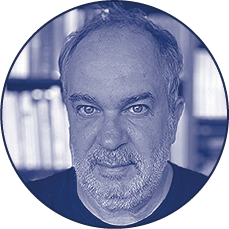
Sergio Neuenschwander
Full Professor, Brain Institute, Federal University of Rio Grande do Norte, Natal, Brazil. Scientific interests: neuronal mechanisms of visual perception; role of cortical dynamics in perceptual organization; information transfer in the retinogeniculate system.
As a form of creative art, Cinema presents a unique construction of reality. By combining narrative and visual storytelling techniques, movies create a rich sensory experience, enabling spectators to feel, see, and emotionally connect with the cinematic content. This perspective allows the audience to immerse in the narrative's highs and lows firsthand, transcending mere observation. The true beauty of Cinema resides in its ability to evoke sensory experience transformation and resonance as if the spectators were part of an ongoing fictional world. I will begin my presentation by explaining the neuronal mechanisms considered relevant for image representation, drawing from our experimental data in the visual system, including the retina, the lateral geniculate nucleus, and the visual cortex. In particular, I will focus on the debate of enhanced neuronal activity versus temporal coding as the critical mechanism for visual binding and attention. I will then explore how movies disrupt and challenge conventional perspectives on image representation, revealing the constructive nature of perception. As an illustration, I will showcase examples from collaborative artwork with Rivane Neuenschwander and highlight the documentary and fictional contributions of Cao Guimarães. Through these insights, I aim to establish a basis for discussing how our internal perceptual organization drives creativity in various artistic endeavors.

Frederick Barrett
Associate Professor of Psychiatry and Behavioral Sciences, Johns Hopkins University School of Medicine; Faculty of Neuroscience, and Psychological and Brian Sciences, Johns Hopkins University; Director of the Johns Hopkins Center for Psychedelic and Consciousness Research, USA. Scientific interests: the neural basis of cognition and affect; the cognitive neuroscience of music, and the mechanisms underlying acute and enduring effects of psychedelic drugs.
Musical improvisation is an enduring art with a rich history of creative output and provides a model for the study of the neuroscience of creativity. Anecdotal evidence and some recent empirical evidences has suggested that psychedelic drugs may be powerful modulators (possibly enhancers) of creativity. We will explore evidence for psychedelic alteration of creativity and propose an approach to combined use of music and psychedelics as tools for the investigation of the neural basis of creativity.
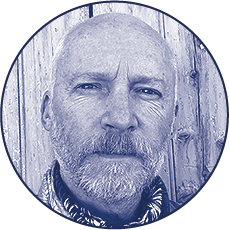
Marcus du Sautoy
Simonyi Professor for the Public Understanding of Science and Professor of Mathematics, University of Oxford, UK. Author of eight books and two plays, he has presented numerous radio and TV series including “The Story of Maths” for BBC. He works extensively with a range of arts organisations bringing science alive for the public. Scientific interests: understanding the world of symmetry using zeta functions, a classical tool from number theory.
Will a machine ever compose a symphony, write a prize-winning novel, paint a masterpiece or prove a mathematical theorem? And if so, would we be able to tell the difference? Based on his book The Creativity Code, Marcus du Sautoy explores the new developments in AI that are shaking up the status quo and asks how long it might be before machines come up with something creative, and whether they might jolt us into being more imaginative in turn.
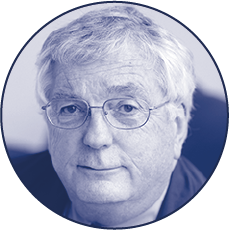
Edward Kelly
Professor, Division of Perceptual Studies, Department of Psychiatry and Neurobehavioral Sciences, School of Medicine, University of Virginia, Charlottesville, USA. Co-director of Ray Westphal Neuroimaging Laboratory. Scientific interests: neuroimaging studies of exceptional psi subjects and psi-conducive states of consciousness, and both scientific and philosophical theories of consciousness and mind/brain relations.
Scientific study of creativity has so far been carried on almost entirely, whether explicitly or implicitly, within a context provided by the worldview known as “physicalism,” which represents current majority opinion among mainstream workers in areas such as biology, neuroscience, cognitive neuroscience, psychology and the behavioral sciences, and which currently constitutes the received wisdom of “opinion elites” more generally in most sectors of modern societies worldwide. This worldview essentially pictures reality as consisting at bottom of tiny bits of some sort of insentient material “stuff” moving around in fields of force in accordance with mathematical laws, and everything else that exists as necessarily emerging somehow from that most-basic stuff. We ourselves are nothing more than immensely complicated biological machines, operating deterministically, so there can be no such thing as free will. Our minds and consciousness are manufactured entirely by neurophysiological processes occurring in our brains, so there can also be no such thing as postmortem survival. On a more cosmic scale we see no sign of final causes or any sort of transcendent order. On the contrary, the overall scheme of nature appears in the end to be utterly devoid of meaning or purpose. This bleak and arguably destructive worldview purports to be justified by the findings of modern science, but it is more accurately characterized as a philosophical doctrine grounded in the highly developed classical physics of the late 19th century. Moreover, recent developments in areas including physics itself, the psychobiology of mind and consciousness, and philosophy of mind have collectively undermined its empirical basis and exposed the need to replace it with an expanded science-based worldview which is consistent with the revolutionary advances of more recent physics, and which can potentially accommodate a variety of poorly-understood but significant realities of human experience, including in particular extreme forms of creativity, mystical experiences of various types, and paranormal or “psi” phenomena, which appear deeply interconnected both psychologically and historically. The general picture of reality currently emerging as an alternative to the prevailing physicalism amounts philosophically to its virtual opposite - some form of realist idealism which takes consciousness as fundamental and derives all else from that. My talk will briefly summarize these developments and sketch some ways in which they can impact future scientific work on creativity, ameliorating present defects and difficulties and leading toward both deeper understanding and increased availability for empirical study and application.

Moderator | Axel Cleeremans
Participants | Pedro Abrunhosa, Nicola Clayton and Mark Baldwin, Marilyn Schlitz, Sergio Neuenschwander
In this closing event moderated by Axel Cleeremans we will once again return to the central question of the symposium: What is the process of creativity? Speakers from different backgrounds will exchange ideas and offer their own perspective on the issue. Nicola Clayton, Mark Baldwin, Marilyn Schlitz and Sergio Neuenschwander will be joined by the Portuguese artist Pedro Abrunhosa to debate, interact with the public, and perform in an informal, engaging atmosphere intended to promote … creativity!



 Program
Program